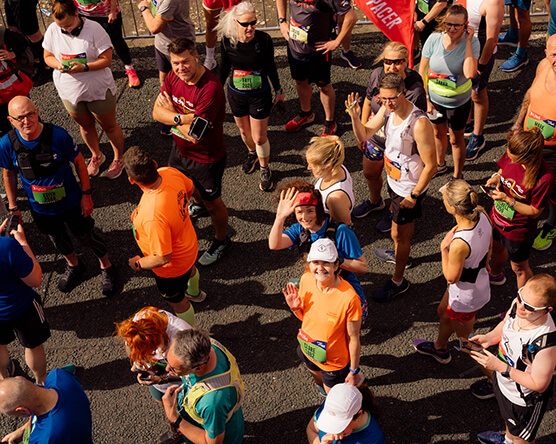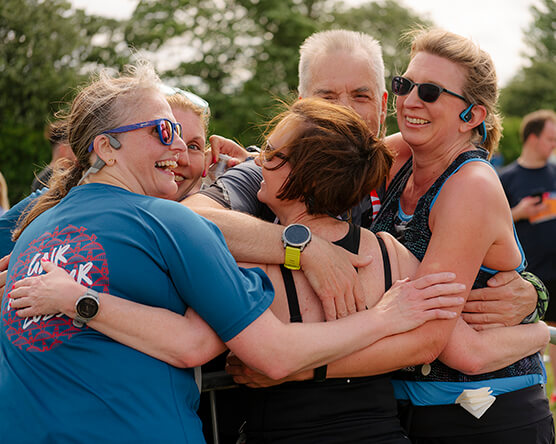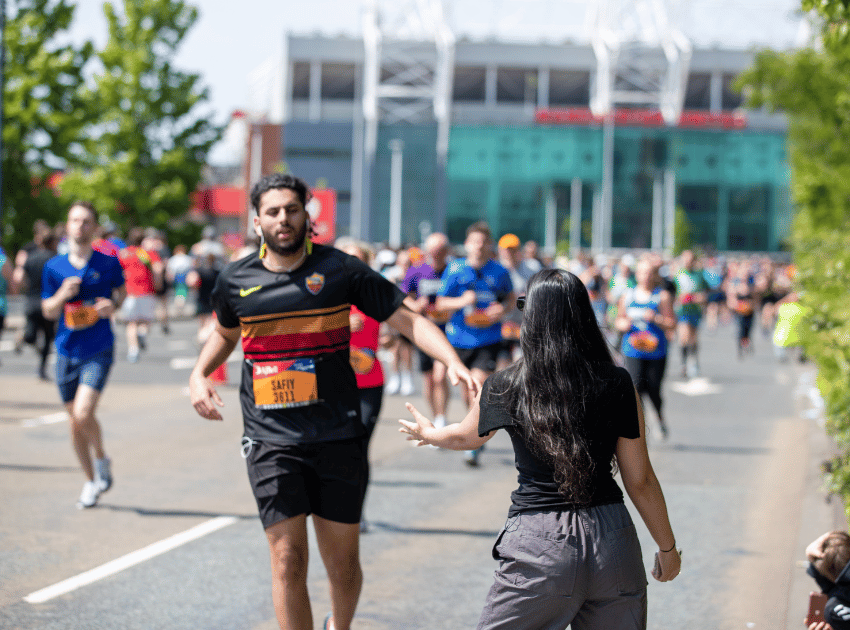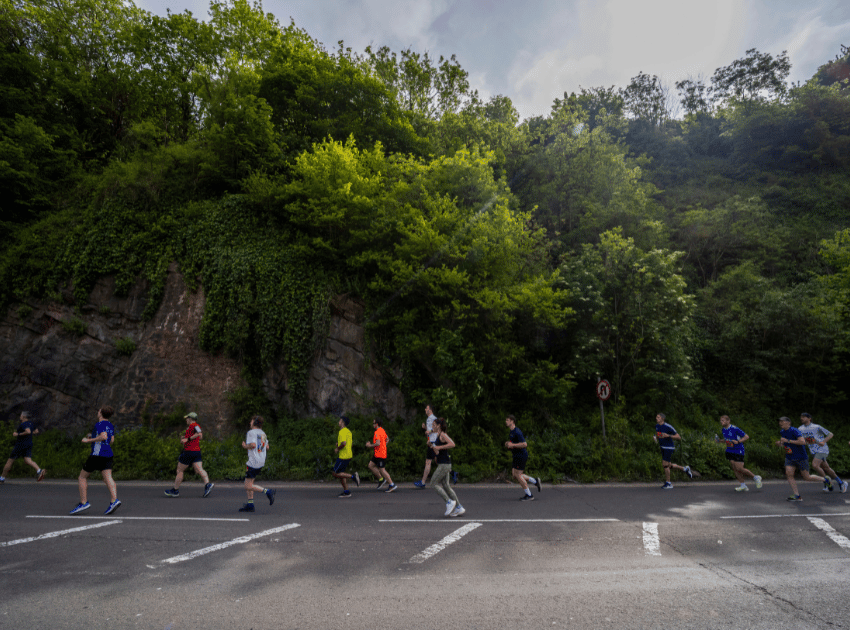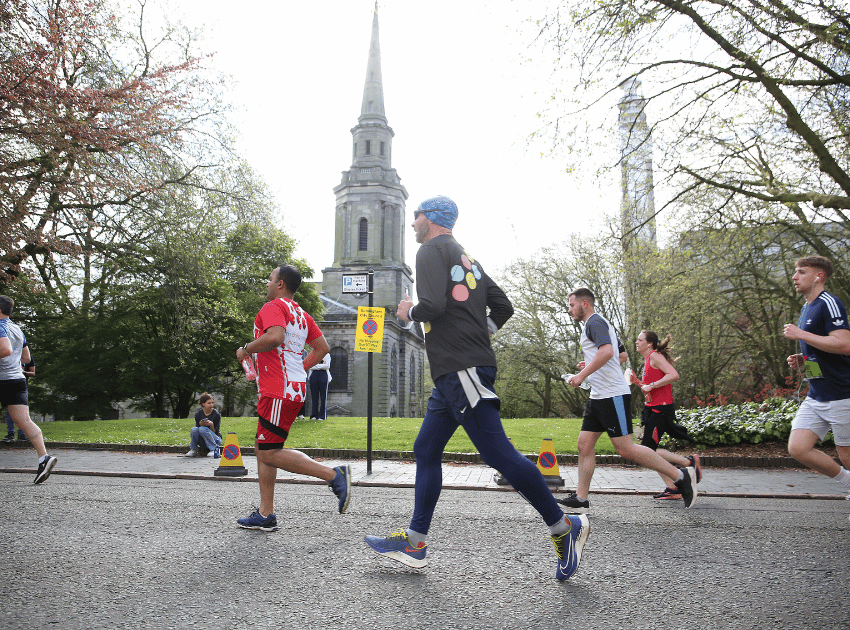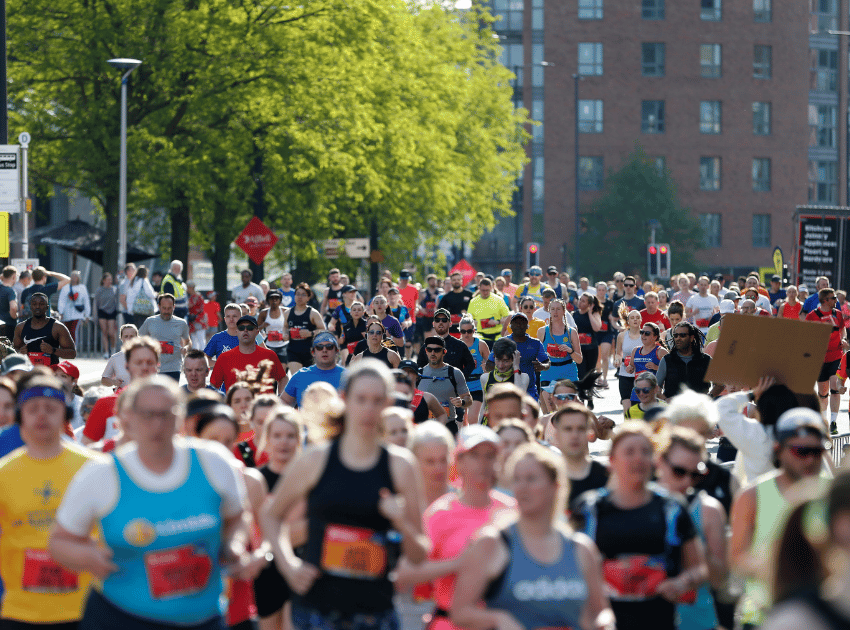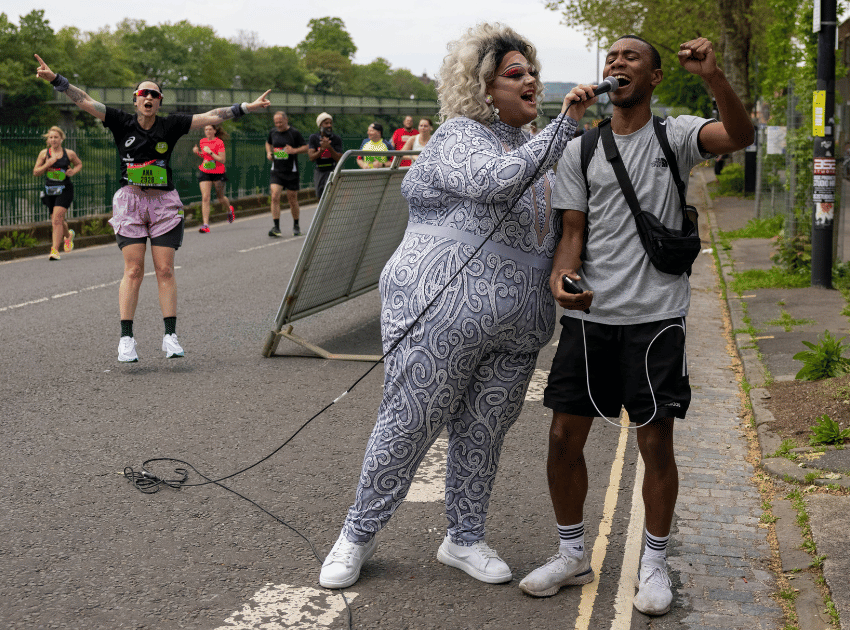Great Run is proud to partner with Runna – your personalised running coach app. As the official training partner of the AJ Bell Great Run Series, Runna is supporting our runners with comprehensive, expert-approved training content. No matter your experience or ability level, Runna’s tips and hints can help you unlock your full potential and be your greatest on race day.
The 10k is one of the most popular running distances to race. It isn’t quite as daunting as a half marathon or a marathon, but it is a great step up after a 5k.
Why have a pacing strategy for a 10k race?
A strategy for pacing a 10k ensures you get the best out of your race and avoid running out of steam too early – or finishing with more left in the tank. And, of course, it helps make sure your run is enjoyable! The most efficient way to run is to start slower and build the effort/pace throughout; this is also called a negative split.
Goal time for a 10k
Start by working out what time you are aiming to finish in. For example:
- If you’re aiming to finish in just under an hour, then you need an average pace of 5:59 minutes per km.
- If you’re aiming for a 50-minute 10k, then this is an average pace of 5:00 minutes per km.
- If you’re aiming for a 45-minute 10k, that’s an average pace of 4:30 minutes per km.
Sticking to an exact pace isn’t easy, so give yourself a range to target or a buffer of 3-4 seconds either side of your target pace. Check out these target paces (per mile and km) for a range of 10k goal times below or use the Runna pace calculator here.
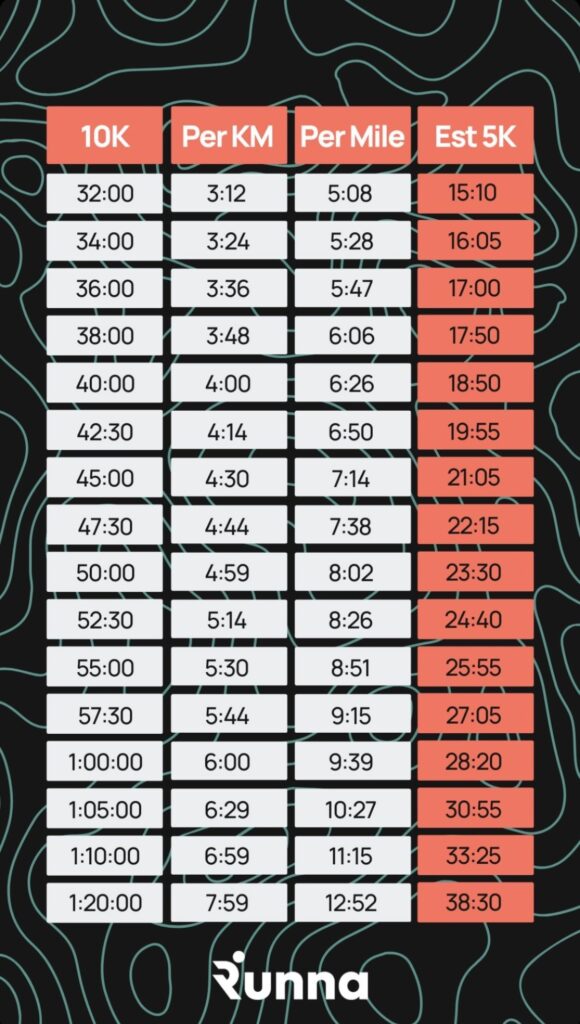
For the 50-minute 10k runner, this would be a pace range of 4:57-5:03 min per km. To help you achieve this negative split, divide your 10k into 3 sections: first 3k, 4-7k and final 3k.
How to pace a 10k: a sample strategy
Here’s a sample pacing strategy for a 10k using a negative split, split into 3 parts:
First 3k (miles 0-2)
Start off around 5s/km slower than your target pace for the first 3k. It is likely that your first 1km or mile will be a bit quicker as you get wrapped up in the excitement of the race, but try to dial it back and be strict with yourself. It’s early on, and you want to save that energy for the final few kilometers or miles.
The effort should feel fast but also relaxed. Breathing should feel controlled.
4-7k (miles 3-4)
It is common for people to dip around halfway into the race. This is more likely to happen if you have paced the first few km too fast. From 4k onwards (or approx. at mile 3), increase the pace to your target race pace. Avoid surging to change your pace; this is a waste of energy. Slowly up the ante and use other runners around you to pull you along.
Keep assessing how you feel, but wait for that final 2-3k to really push on! If you aren’t sure, then concentrate, try to stay relaxed and hold your pace.
From 7k (miles 4-6.2)
Now you’ve got 3k to go. It’s probably feeling tough already, but you’re so close to the finish line! Pick your moment to push on. If you are feeling good, this might be from 7k (which is approx. mile 4), but if you are struggling, wait until you’re closer to the finish line.
From 9km, with only 1km to go, empty the tank and push hard to that finish line…
Then celebrate; you did it!
Top tips for your next 10k race
Ensure your training includes a variety of runs: Use a combination of speed work, tempo runs, and long, short, and easy runs to prepare for your 10k race. Ideally, include some runs that are longer than 10k so that the race distance feels manageable (and remember – Runna can help with all that).
Eat a balanced diet, but don’t skimp on the carbs: You don’t need to carb load for a 10k race, but eating a balanced diet rich in carbs and protein will help your body recover efficiently.
Get enough rest: Taper (i.e. reduce bit-by-bit) your training in the week leading up to the race and make sure you get plenty of sleep.
Use tried and tested gear on race day: Don’t try anything new on race day – you don’t watch itchy labels or blisters distracting from your running.
Split the race into a few sections and use the right pace for each: Begin slightly slower than your target pace, increase slightly in the second section, and go all in for the last 1-2 kilometres, just as we’ve explained above.
Be mindful of how you’re feeling: If you’re struggling, it’s okay to take it down a notch. If you’re feeling good, you can gradually increase your pace. Listen to and trust your body.
Get familiar with the race route beforehand: Check where to expect hills and dips and, if you can, go see the race route before the big day. Knowledge is power.
Use a GPS watch or your phone to track your pace: Keep track of your speed and pace during the run. After the race, cool down with a light jog or walk, hydrate, and celebrate. Congratulations, you made it!
Most importantly, enjoy it!
Find out more about pacing a 10k and the Runna app at runna.com. Already training for an AJ Bell Great Run Series event? You can access your FREE two week Runna trial via the Great Run Rewards page



